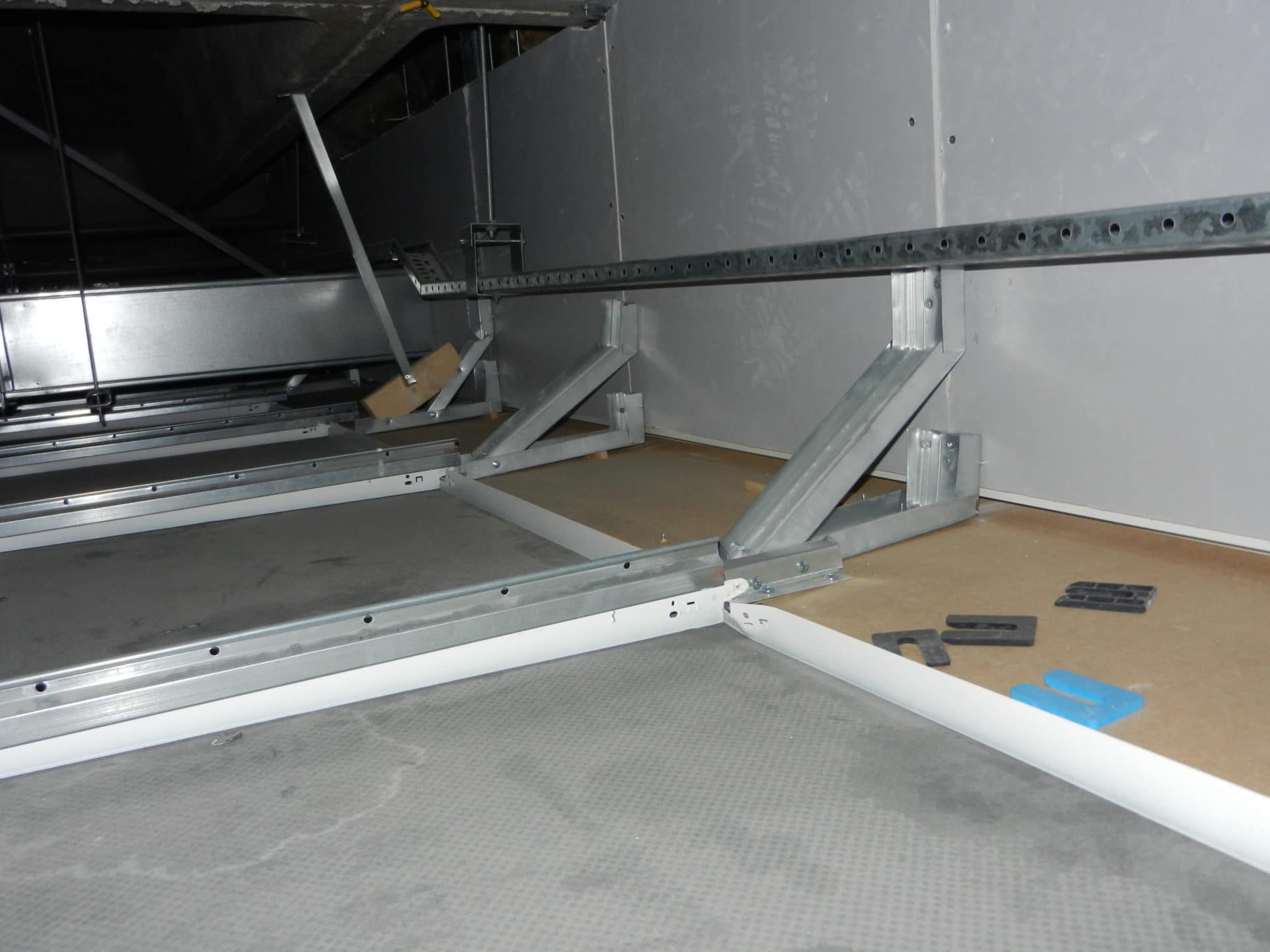When we are required to investigate the causes of ceiling collapses and tiles falling, the construction of the suspended ceiling is often the primary issue. However, a contributing factor can be the construction of the plasterboard margins and, in particular, the transition between the two elements. Here, FIS independent advisor Alex Double highlights the top 10 issues that he has encountered during site visits.
- Design
It is common that designers may only illustrate the margin on a reflected ceiling plan with very little detail, assuming the subcontractor will adopt the design responsibility. It is imperative that the suspended ceilings and plasterboard margins are fully designed with all components detailed and annotated. If you have no design responsibility, ensure the designer has provided sufficient information to construct the margin.
- Installation
The installation of the plasterboard margins does not always follow the recommendations of the manufacturers. Rather than being an integrated part of the ceiling, the plasterboard margins are often installed separately and often at a different time to the main ceiling. They may be installed wider than required and cut back as the ceilings are being constructed. As a result, the main supporting MF metal framework is invariably stopped short with the plasterboard extended, leaving the cantilevered board to act as a structural element. This is not compliant.
- Adjacent Ceiling Loading
If the load of the adjacent suspended metal/mineral ceiling is incorrectly bearing onto the margin this can cause issues if the margin is not designed for this purpose. If the weight of the MF margin is bearing on the suspended ceiling, this can also cause issues. The suspended ceiling, plasterboard margin, plenum boxes, transition trims, etc. should all be independently supported.
- Adaptions
Over the life of a suspended ceiling, it is possible that there will be alterations carried out – the impact of this can be catastrophic. Any alterations must be carefully planned and designed to ensure any changes are possible and do not impact on the stability of the ceiling/margins. We would always recommend that when there are to be alterations to existing works, these should be inspected to ensure there are no latent or patent defects present.
- Applied Loading
If plenums, linear grilles, lights or other services are located within the margins, the loads of the services must be considered. These should be fully co-ordinated to ensure they are designed for use within a plasterboard ceiling and that either the loadings are capable of being borne by the plasterboard or independent support is provided if required.
- Top Fixing
The incorrect selection of top fixings is probably the most common cause of ceiling collapses. We would recommend that the FIS Best Practice Guide: Top Fixings for Suspended Ceilings is consulted prior to using or selecting an appropriate top fixing for a suspended ceiling. See the FIS guide at www.thefis.org/knowledge-hub
Ceilings should always be independently supported to the structure or sub-grid and not into any services supports. A maintenance operative would not expect this and any adjustments to the services could cause issues with the margins/ceilings.
- Linear Grilles
When the choice of the plenum box has not been fully co-ordinated with the plasterboard ceiling design, we have seen the linear grilles being installed in such a way that they are also providing support to the plasterboard or the metal/mineral fibre ceilings. As a result, any adjustment to the linear grilles can cause serious issues, including full or partial collapses.
- Mix and Match
Because the plasterboard margins rarely provide any acoustic performance or fire resistance, we see a variety of manufacturers’ materials used with a mix and match approach in the installations. This can cause confusion over which installation details are relevant or correct because there is no single point of reference.
- Transition Trim
Transition trims are used at the interface of the suspended ceiling and the plasterboard margin. These can be aluminium or steel and they should be independently supported in accordance with the manufacturers’ recommendations to avoid any issues of movement and potential collapse. We regularly see transition trims fixed to cantilevered plasterboard or the ceiling grid without independent support.
- Co-ordination
The plasterboard margin is often considered the poor relative of the more expensive suspended ceiling – this is unjustified. It is imperative that these plasterboard areas of the ceiling are properly co-ordinated with the main suspended ceilings and M&E services to ensure a fully compliant and safe installation. Without proper co-ordination, there can be potential issues, including collapses.
Being aware of these risks is the first step in ensuring the work is safe now and during future refurbishment work.
FIND OUT MORE:
ALEX DOUBLE
alex@addc-ltd.co.uk
JOE CILIA
FIS technical manager
joecilia@thefis.org


